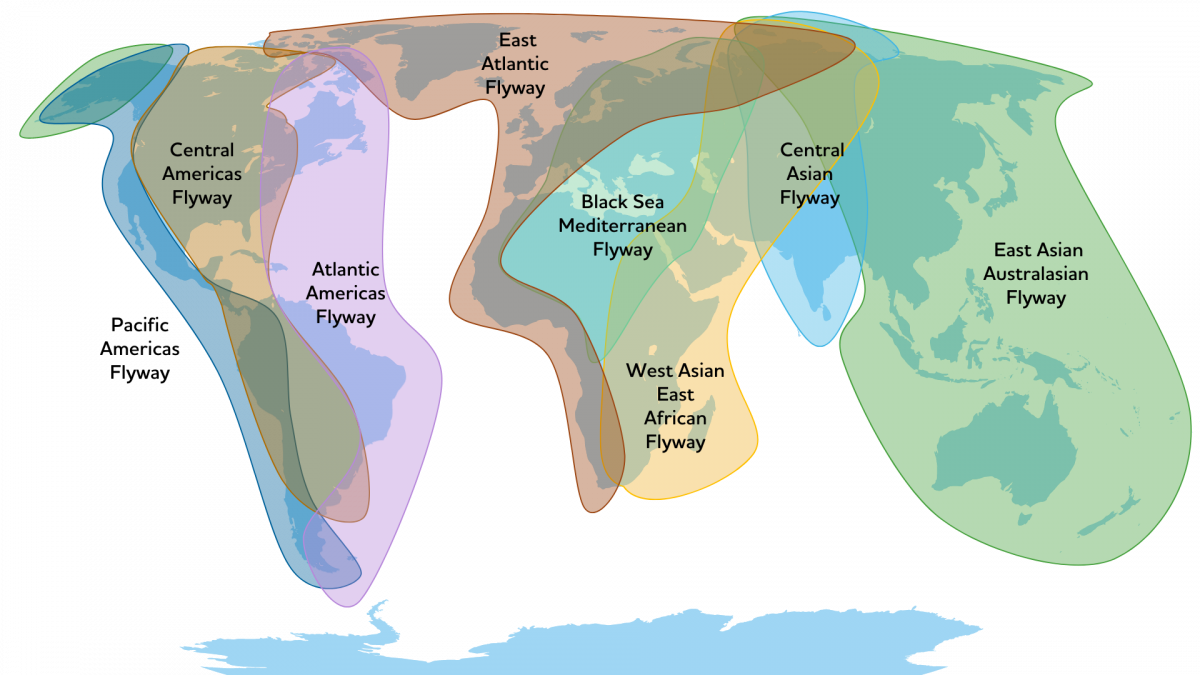Flyway conservation
A flyway is defined as the geographical area covered by a migratory bird over the course of its annual cycle, while travelling from its breeding grounds to the non-breeding areas and back. Most species aim for the shortest possible route during migration. However, as migration is an energetically costly behaviour and the route can be throusands of kilometers long, most birds cannot complete the journey in one leg. They need to stop at suitable habitats that provide sufficient resources to refuel their energy reserves, often resulting in deviations from the shortest paths. Geographical features and weather conditions further affect the migration routes. As these environmental parameters affect many species in the same way, birds tend to follow very similar routes, allowing experts to distinguish eight major flyways around the world.

Wader flyways of the world - adapted from Hugo Ahlenius, UNEP/GRID-Arendal
In each flyway, key sites have been identified that support a large percentage of the populations of migratory birds. Between these key sites, a network of staging sites exists that is equally important to the survival of the birds as they provide essential resources. For migratory birds changes at each site in this network can have consequences for their survival and thus the development of the flyway population. This makes them particularly vulnerable to environmental changes and highlights the need for conservation and management to take place at the global (flyway) scale, contributing to the ecological connectivity between critical sites. International cooperation across their migratory range is needed to conserve and protect migratory waterbirds and the habitats on which they depend.
The flyway training kit produced by the Wings over Wetlands project serves as a basis for strengthening the capacity for the sustainable management of wetlands and the conservation of waterbirds from a flyway perspective.
